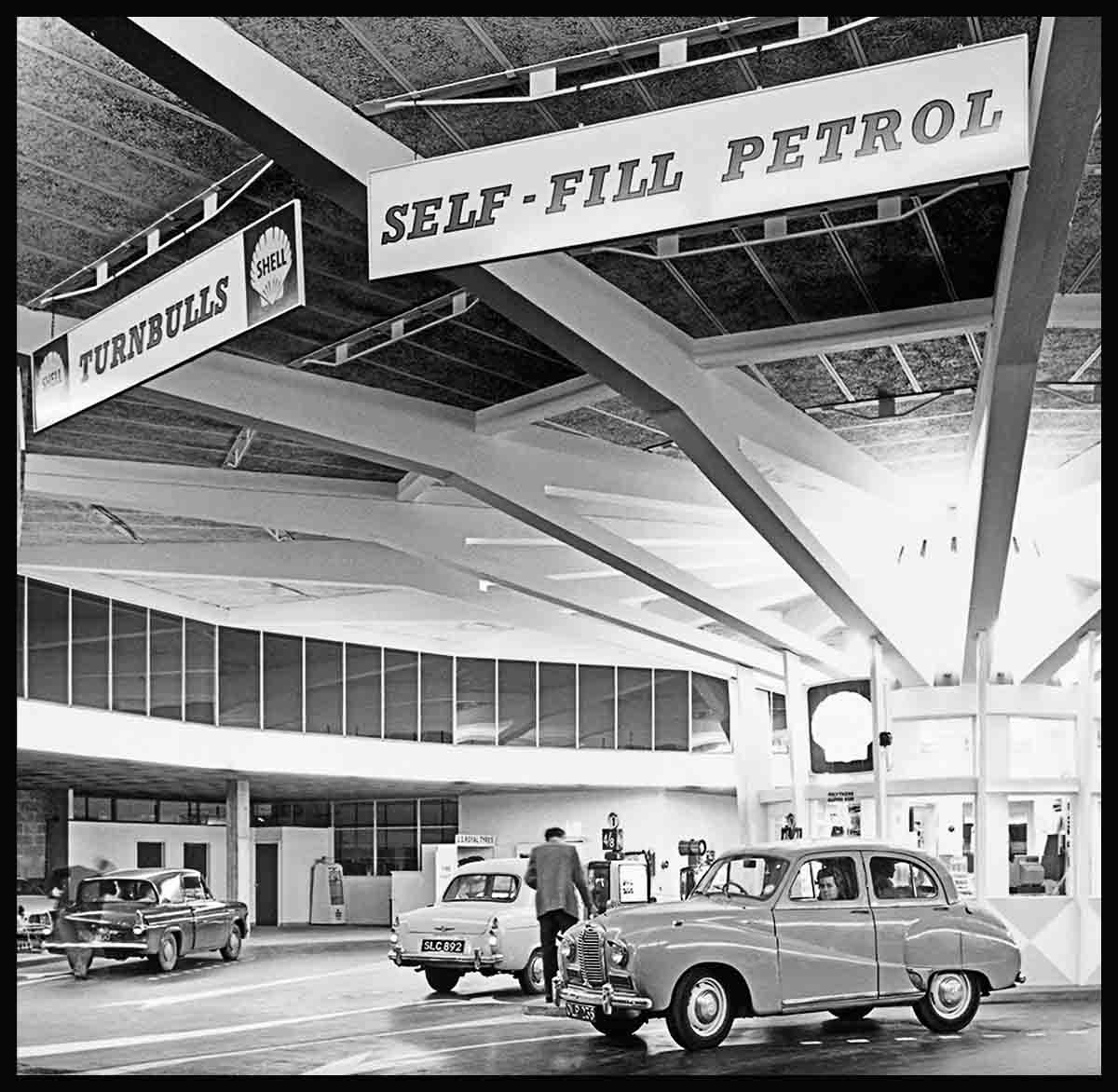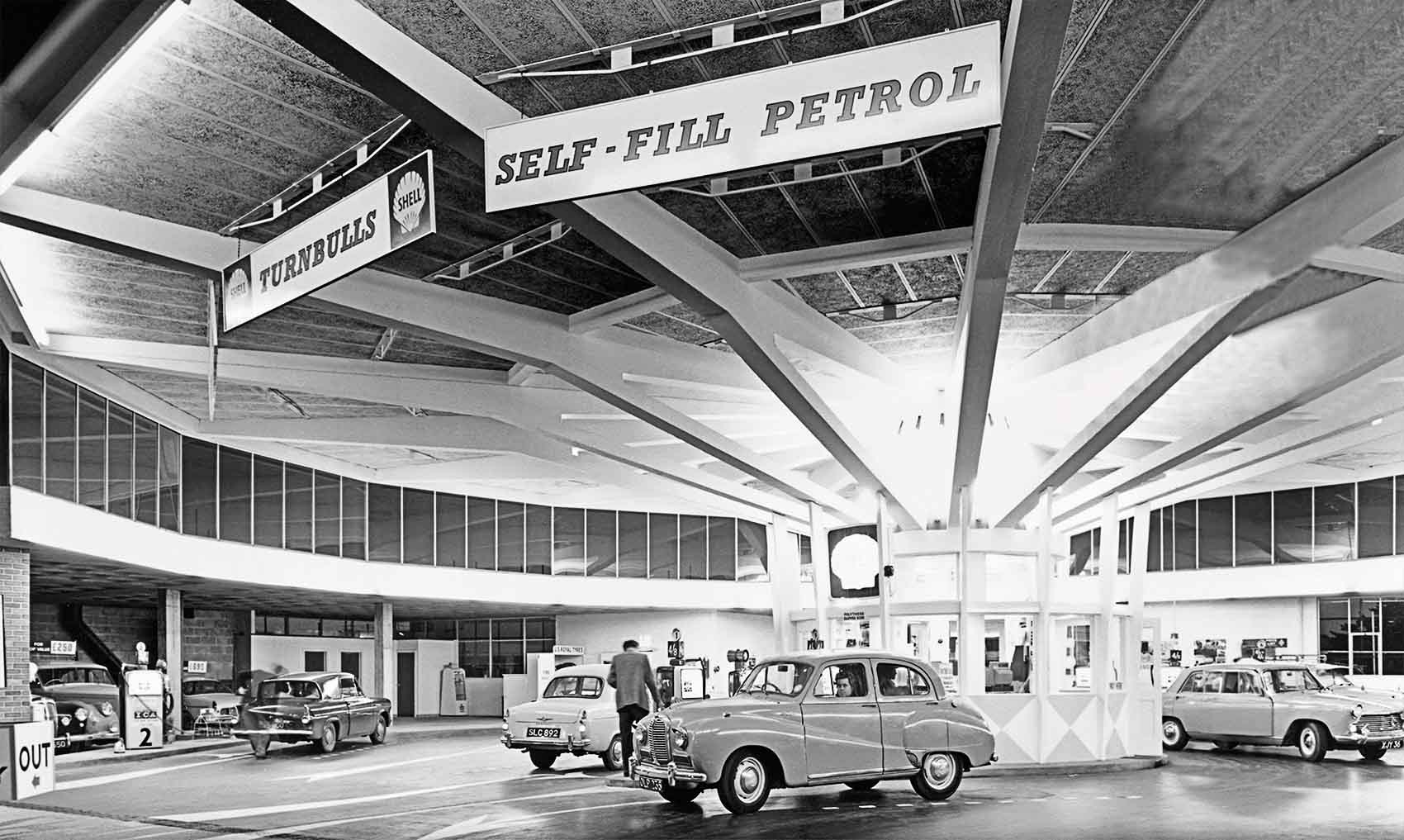
Fuelling The Future
Cars need fuel, and for those fortunate to own a car in the early 20th century, that meant buying petrol in cans from the nearest chemists’ or bicycle shop. As car-ownership increased, however, following the launch of the Model T Ford the need for roadside pumps and purpose-built, drive-in forecourts became crucial. By the 1930s they had become a familiar sights on the global road networks. Handling the precious fuel, though, was still the preserve of a trained attendant, until foolproof equipment was designed so that drivers could refuel their cars themselves.

DRAMATIC DESIGNS
Petrol companies had to make their sales environments customer-friendly. This was an entirely new area for engineers, architects, and retail experts to address, but most stuck to a similar formula, with fuel kept in underground tanks, petrol pumps on the forecourt, and payment taken inside a building. Almost all forecourts were covered, with a protective canopy to shield customers and their cars from the elements.
As the years progressed, architecture became more dramatic, with famous architects such as Ludwig Mies van der Rohe and Arne Jacobsen designing beautiful Modernist concrete structures. One of Britain’s first purpose-built self-service service stations opened in Plymouth in 1960, and was crowned with an impressive cantilevered canopy.
This cathedral-like Shell forecourt opened in Plymouth in 1960 and was one of the first ever, self-service petrol stations in the UK.
It is a quote. The Classic Car Book – The Definitive Visual History 2016




